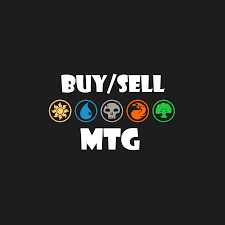A Guide to Buying and Selling MTG Accessories on Online Marketplaces

If you’re into Magic: The Gathering and find yourself browsing for gear—or maybe thinking about offloading some of your extra stuff—online marketplaces can be a goldmine. Whether it’s sleek sleeves, playmats with killer art, or even handmade tokens, there’s a whole world of MTG accessories waiting to be discovered, bought, or sold.One place people are turning to is MTGetsy, a more focused space for this kind of trading. But honestly, no matter where you’re doing business—be it MTGetsy, Etsy, eBay, or even TCGplayer—there are a few things worth keeping in mind. These tips can help both buyers and sellers make the most of the experience.
Shopping for MTG Gear? Keep These in Mind
Do a Little Digging First
Don’t just jump at the first listing you see. Compare what’s out there—check prices on a few platforms. A quick scan of reviews never hurts either. Sellers with consistent positive feedback are usually a safer bet.
Know What You’re Getting
Quality matters, especially for items like playmats or deck boxes. If the listing mentions materials like neoprene, leather, or acrylic, that’s a good sign. When it comes to custom art or tokens, always ask to see clear, close-up photos to get a feel for the level of detail.
Don’t Ignore Shipping Info
Delivery costs vary. Some sellers offer free shipping, others don’t—especially international ones. And if you’ve got a tournament or meetup coming up, double-check those delivery windows.
Custom Work? Ask for It
A lot of smaller sellers love doing custom orders. If you’ve got a color scheme or specific character in mind, reach out. Personal touches can take an item from good to perfect.
Be Cautious, Not Paranoid
Use trusted payment methods like PayPal or a card that offers purchase protection. And yeah, if something’s listed for a price that seems outrageously low, there’s probably a catch.
Selling Your MTG Creations? Here’s What Helps
Let the Product Speak for Itself
Good photos can make or break a listing. Natural light, clear shots from a few angles, and close-ups of key details are key. Also, make sure your descriptions actually describe—mention size, material, and anything a buyer might ask about.
Price Smart, Not Just High
See what similar items go for and set your price with that in mind. Want to move more units? Try bundling items—like matching sleeves and a playmat—for added value.
Get Found with the Right Words
Think like a buyer. Use search terms people are likely typing:
mtg token set
hand-painted deck box
foil card storageInclude tags like Commander, EDH, planeswalker, or even color combos.
Go the Extra Mile with Service
Quick replies build trust. A little surprise in the package—a bonus token, maybe—leaves a great impression and might turn a one-time buyer into a regular.
Let People Know You Exist
Quick replies build trust. A little surprise in the package—a bonus token, maybe—leaves a great impression and might turn a one-time buyer into a regular.
Let People Know You Exist
It’s not enough to list your stuff. Share it in MTG circles—Facebook groups, Reddit threads like r/mtgfinance, even Discord channels. Show your process on social apps like TikTok or Insta—those behind-the-scenes glimpses pull people in.
Why Consider MTGetsy?
While big platforms cast a wide net, MTGetsy shines by catering to a niche. It’s a space made for players and creators who care about craft and creativity. Buyers find gear that’s anything but generic, and sellers reach people who value what they’re making.In the end, whether you’re on the hunt for a statement piece or hoping to grow a side hustle, the MTG accessory market has room for everyone—as long as you know how to navigate it.
Good luck out there, and may your pulls be lucky.



